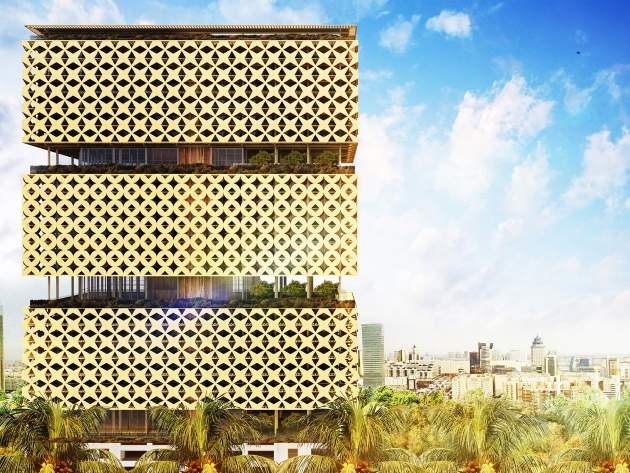
Patrick Kingsland: Hi Hermann. Can you start by telling us a bit about your architecture practice?
Hermann Kamte: Hermann Kamte & Associates (HKA) is a small architecture firm based in Yaounde, Cameroon. We work in the fields of architecture, design, urbanism, landscape, education, research and development. Our vision is to bring a new dynamic into African architecture.
PK: Most modern buildings are made from glass, steel and concrete. Why did you decide to use wood as the primary construction material in this project?
HK: I share the view of Michael Green from MGA architects. He says wood is Mother Nature’s fingerprint; a material that allows buildings to connect us to nature. It’s important for its aesthetic and cultural impact and its influence on everyday life as a warm, soothing material.
We also want to encourage policies about sustainable construction because wood helps reduce pollution, enhance sustainability and improve overall well-being. It’s also an appropriate material for this part of the world: a tropical rainforest region. At first it might be expensive, but in time it will become cheaper and more accessible.
With the Lagos Tower we are trying to initiate this process. Building it would be a powerful symbol. Can you imagine the first smart tall wooden building in an African city? It would be a major sign of progress, technically and technologically.
PK: Wood actually has quite a long history as a construction material. Do you think it is neglected by architects?

US Tariffs are shifting - will you react or anticipate?
Don’t let policy changes catch you off guard. Stay proactive with real-time data and expert analysis.
By GlobalDataHK: Yes and no. Yes because some architects just want to build with common materials and wood can be difficult to master because every tree is unique. No because several architects are making efforts in wood construction in the context of global warming.
PK: What kind of practical challenges do architects face when using wood? Is wood strong enough as a construction material, for example?
HK: I think wood is a particularly strong construction material and is very safe. When we talk about this subject, people tend to think of traditional wood constructions but modern technology offers many new possibilities. In 2013, CF Møller proposed a 34-storey skyscraper made of wood. In April 2016, PLP Architecture and Cambridge University’s Department of Architecture proposed the 80 storey and 300m Oakwood Tower to the London Mayor.
PK: Can you tell us more about the Lagos Wooden Tower?
HK: We designed it as part of an international competition launched by Metsä Wood in 2016. Our first goal was to build a new approach to urbanisation and population growth. We have to think about the possibility of building another city above the existing urban fabric. Our idea is to extend the city of Lagos in height with a wooden building because of their lightness and sustainability. The tower is a residential complex which can be erected above an existing building called ‘Abebe Court’, which is located on the highbrow Bourdillon Road in Ikoyi
Our second goal was to incorporate Lagos’s extraordinary cultural diversity. Most ethnic groups in Nigeria and the rest of Africa are living here, and we think architecture can be a symbol of that diversity, connecting everyone in the city together.
Our final goal was to introduce the concept of wood construction into a landscape dominated by concrete buildings. Nigeria benefits from the tropical rainforest in the central to the southern part of the country. So why continue to confine our city to concrete?
The entire structure is built by using the resistance of a laminated veneer lumber (LVL) wood system. Wood will be used for load-bearing and non-load bearing structure. Structural feasibility is based on LVL products. The project is still as its experimental and study stage, however.
PK: Your design incorporates different elements of the local Yoruba culture in Lagos. Why was this important to you?
HK: For me, architecture is influenced by context. In Lagos, Yoruba culture is very present and we wanted to tell this story through a landmark. Firstly, we used symbols which refer to freedom, emancipation and patronage. And secondly, we reflected the large courtyards used in Yoruba dwelling to bring light and collect rainwater through integrated sky gardens, greenery, terraces and layers.
Obviously there are some evolutions – courtyards have been replaced by greenery, facilities and gathering floors between the three blocks, for example – but the cultural appreciation is still achieved.




